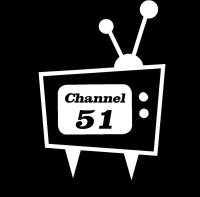FCC Freezes Ch. 51, Encourages Broadcast Occupants to Vacate

WASHINGTON: The Federal Communications Commission today took a step toward taking 6 MHz of spectrum out of the broadcast band. The commission ordered a freeze on broadcast applications in Ch. 51, the top channel in the band. The FCC took the action at the behest of wireless providers. CTIA-The Wireless Association and the Rural Cellular Association petitioned the FCC in March to clear broadcasters from Ch. 51 because they said TV signals interfered with adjacent-channel wireless transmissions.
The commission today issued a public notice freezing all new and pending applications for licenses on Ch.. 51, and encouraging incumbents to relocate. It also opens a 60-day window for pending low-power applicants seeking an assignment on Ch. 51 to amend their applications and file for a different channel. Around 75 applications are currently pending. Thirty-four belong to Landover 2, LLC., a New York-based concern with ties to CTB Spectrum Services, which has seven. CTB is involved in aggregating UHF spectrum across the country to build a hybrid broadcast and unicast wireless network, Doug Lung reported in March. Cavell Mertz & Associates list 777 results for facilities licensed to Landover 2.
The freeze is said to be “temporary” while the commission considers the wireless lobbies’ petition. It doesn’t affect existing full- and low-power stations operating on previously authorized facilities. Those stations may also apply for a waiver where minor modifications need to be done.
“We agree with the petitioners that the freeze is “consistent with the commission’s prior spectrum rulemaking proceedings, and past precedent clearly supports the commission’s authority to adopt immediate freezes pending the outcome of rulemaking changes,” the Notice states.
Ch. 51 is the highest channel on the broadcast TV spectrum, at 698 MHz. It came to define that boundary after broadcasters gave up Chs. 52-69 in the 2009 digital transition. The spectrum between those channels was auctioned off to wireless providers in blocks. Ch. 51 now lies adjacent to the A Block, which comprises 176 wireless licenses from 698 to 704 MHz, and from 728 to 734 MHz. CTIA members Verizon, U.S. Cellular and Cavalier, and several other companies, won licenses in the A Block.
The petitioners cited the Obama Administration’s goal of creating nationwide wireless broadband as justification for booting broadcasters from Ch. 51. The Obama FCC’s National Broadband Plan already proposes taking 120 MHz of broadcast spectrum and reallocating it for wireless services. This is in addition to the 108 MHz relinquished after over-the-air analog TV signals were shut down in 2009.
~ Deborah D. McAdams
Get the TV Tech Newsletter
The professional video industry's #1 source for news, trends and product and tech information. Sign up below.
